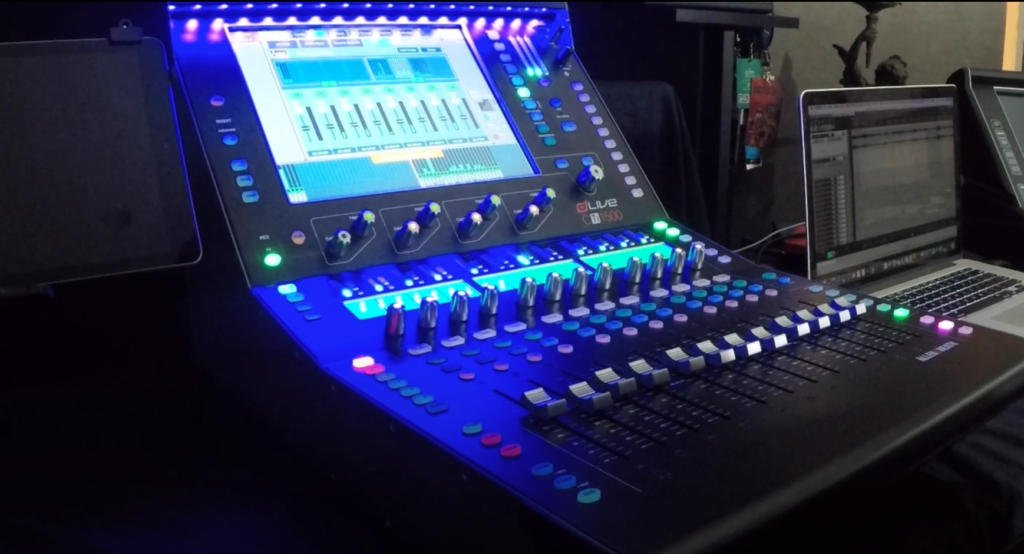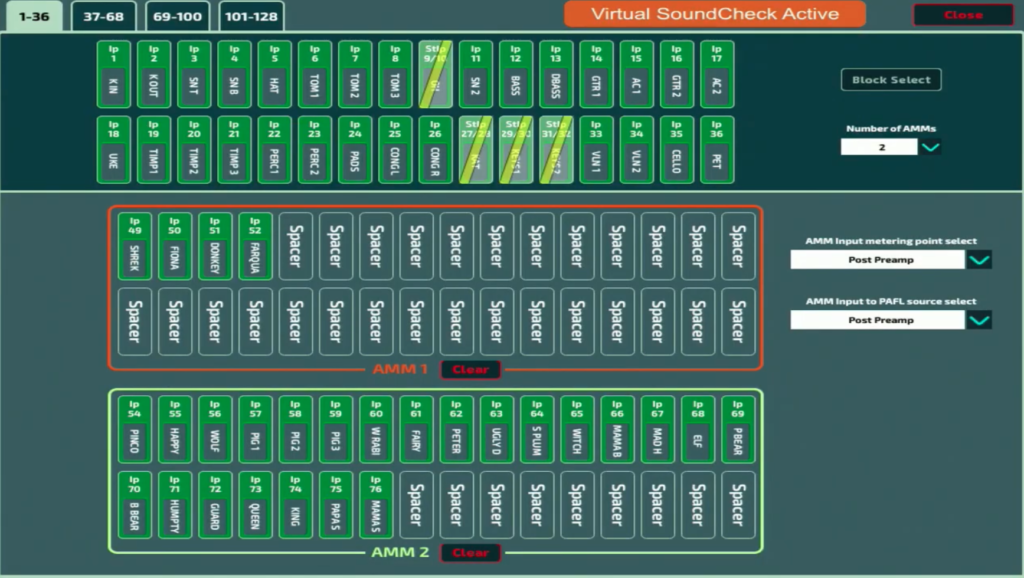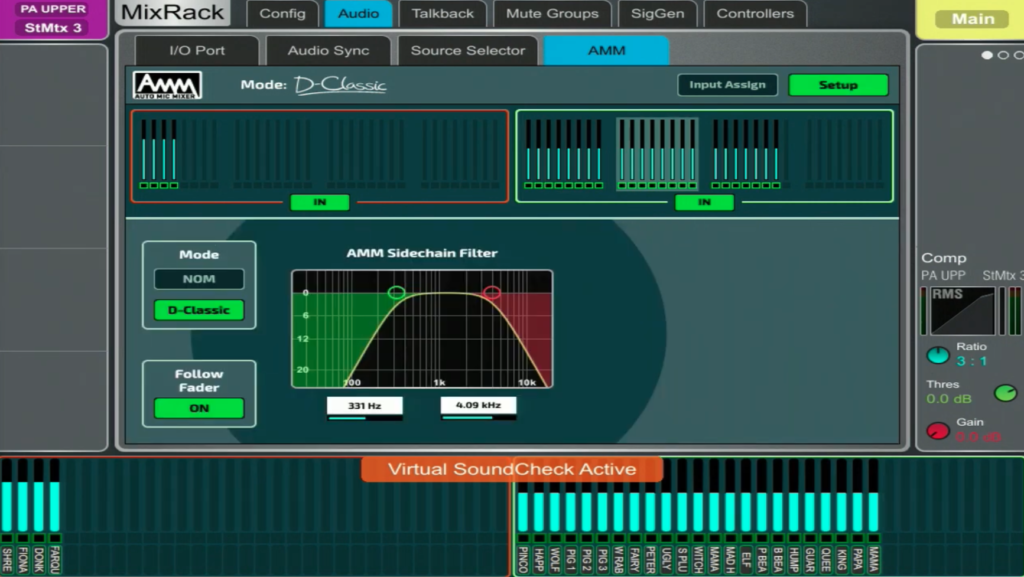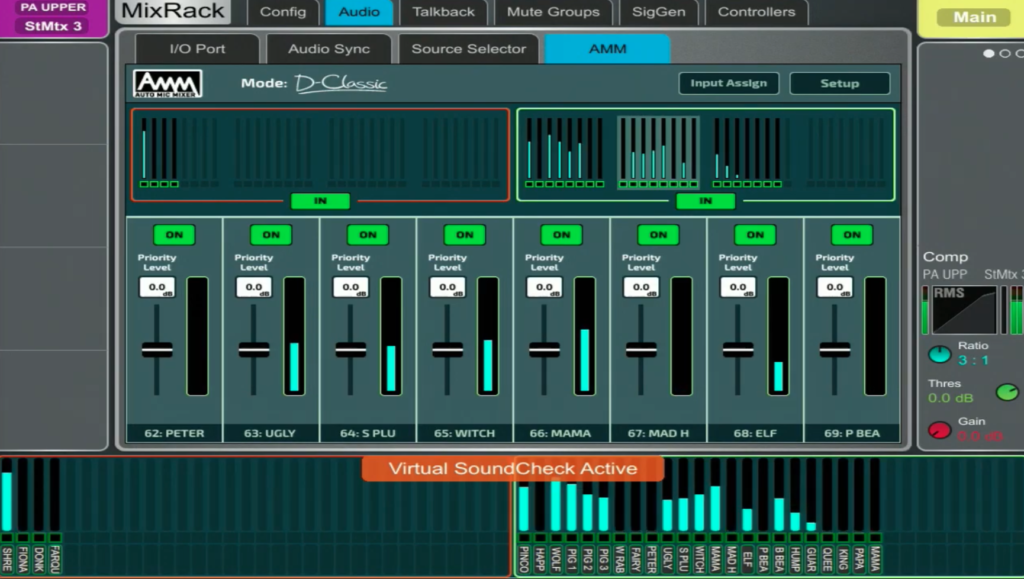News
14 May 2021
The MixWizard – Automatic Mic Mixers

Subscribe to CX E-News
Automatic Microphone Mixers (AMM) are a great tool and most digital mixers feature them, including the Allen and Heath range: QU, SQ, Avantis and dLive. In this article, I’m going to be looking at the dLive AMM.
A lot of people associate AMM as something you use when you do corporate AV, when there’s a large number of panellists. That’s true, but it isn’t always the case and I’m going to show you what I’ve learnt when using an AMM for theatre shows.
I’ve used AMM on many theatre shows and, to be honest, these days I would struggle to do a theatre show without it. To me, it is a total game-changer! I use the AMM for all of the dialogue scenes and single line singing, but typically don’t use it during big chorus singing numbers. The way the algorithm works is in the gain sharing, so when several artists are singing the AMM tries to clamp down on all of it. But for dialogue, it automatically jumps in and opens the microphones faster than a mix engineer can manually ride the faders.
A lot of people will be familiar with the terminology ‘Line Mixing’ when talking about mixing theatre shows. This is when you push the fader one line at a time and open it. We use line mixing to improve our gain before feedback, speech intelligibility, and to stop multiple microphone sources picking up the same sound source. AMM will do all of this for you, but even faster. You can leave the microphones that are on stage open in a scene and AMM will automatically open and close them as the cast deliver their lines. This then gives a very clean, tight, focused vocal sound.
Setting up an AMM
Let me show you how to set up an AMM using my Allen & Heath dLive with a mix from a theatre show.
Firstly, I always programme some bypass buttons for the AMM. I have chosen soft keys 11 and 12, I have programmed these to bypass the AMM automixer. Sometimes in a theatre show I just want to listen in a rehearsal and hear exactly what the AMM is doing. This helps me decide if I want it in or out and how it is affecting the large ensemble numbers. I can then program the AMM bypass into my Scenes within the show so it will be active or Bypassed as required in each scene.
In a dLive, the AMM is inside the mix rack, so if I go into the mix rack it’s under the audio tab and the AMM tab. In dLive you can have one 64-channel AMM, two 32-channel AMMs or four 16-channel AMMs. When doing theatre shows I run two auto mixers, one for my lead characters and one for the ensemble. It’s very simple to set up. It’s really just a matter of getting the inputs you want and dragging them into each AMM. Once this is done, I can see I’ve got the lead characters in one and the ensemble in the other.


There are two modes of AMM in the dLive Console, I have found the D-Classic Mode works best for me in how I approach theatre shows. To make the most of the AMM you need a good heathy gain structure; this will allow the AMM to do its best work with the inputs.
The AMM is Post fader and Post Mute, so pulling the fader down will stop that Microphone from triggering the AMM or muting the channel and will also remove it from driving the AMM. This is great, as you can leave microphones in the AMM group and only the faders that are up (with cast onstage) will be triggering the AMM.

Once the AMM is all set up you can then programme your scenes and choose when the AMM is active or bypassed.
To hear the difference, bypass the AMM when the stage is full of cast and microphones (using the buttons you programmed). You’ll hear it goes from very tight when the auto mixer is on, to being really open and messy sounding. There is all of this extra spill and ambience in the room. When I’m on a PA system trying to cover an audience there could be five hundred or a thousand people in the theatre. All of that extra ambience coming through the speakers obviously effects the gain before feedback, the speech intelligibility, and the cleanness of the mix. This is why an AMM is your best friend and a great way to keep your mix clean and tidy.

As mentioned, the chorus singing isn’t ideal for using AMM, however I’ve had a lot of success when it’s two people singing a duet.
AMM is a great tool. If you’ve never used it, get into it and start to play with it. As I’ve already said, it’s a game-changer. I’ve had many audience members say, “wow you’re so on top of the cues, you’re so fast, you don’t miss a line”. I put on a kind of bashful look and politely inform them that, well, I am The MixWizard! But it’s the AMM – it’s so much faster than a manual mix.
See video here for the full tutorial: https://www.youtube.com/watch?v=Scj2jnGTstM
Subscribe
Published monthly since 1991, our famous AV industry magazine is free for download or pay for print. Subscribers also receive CX News, our free weekly email with the latest industry news and jobs.




